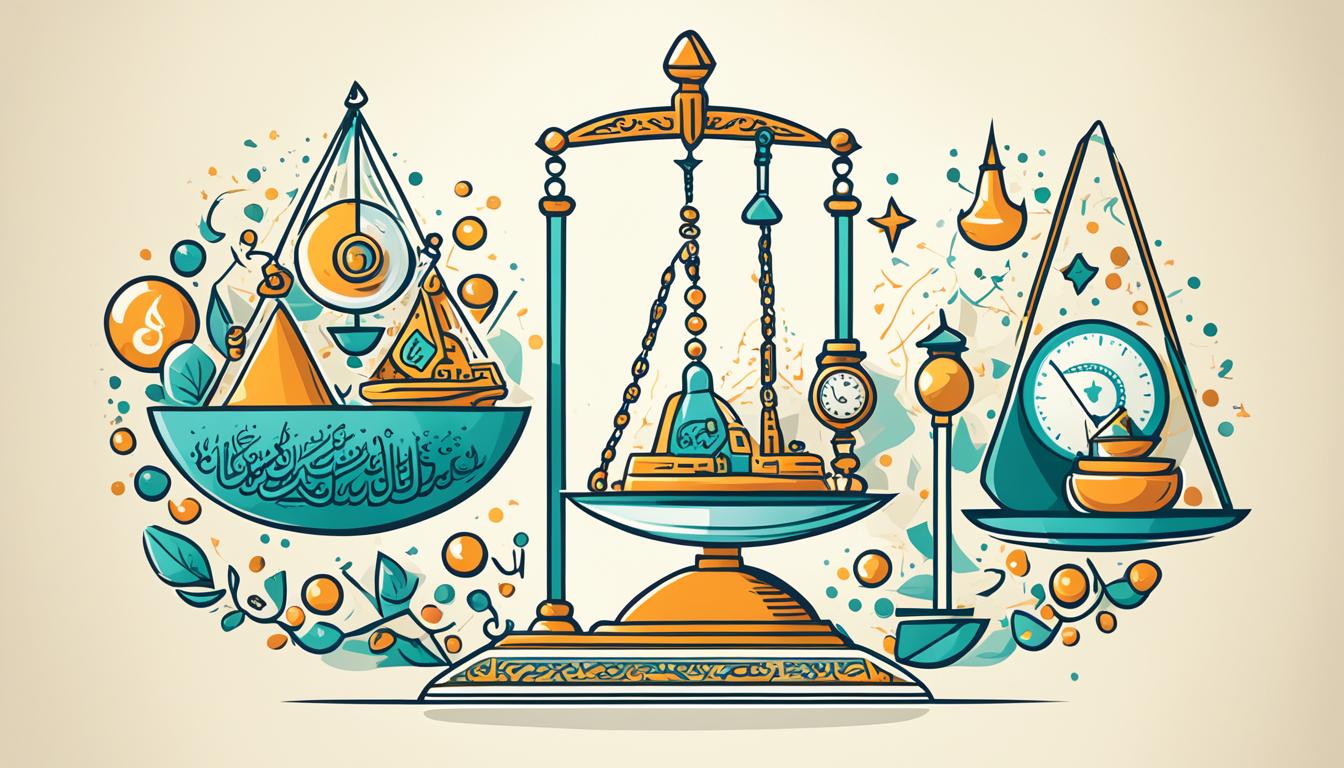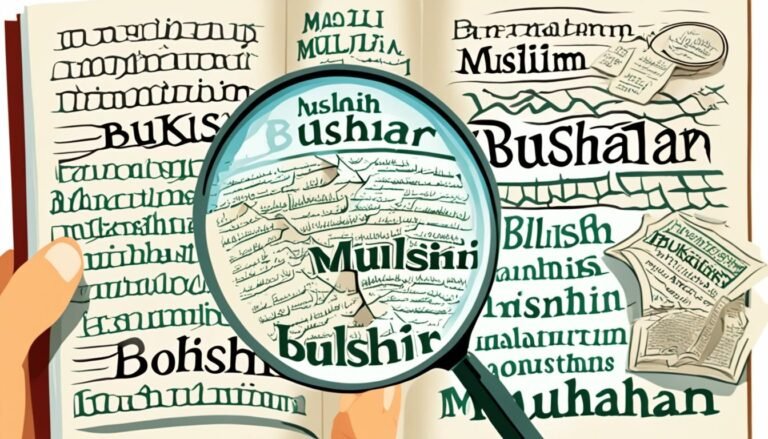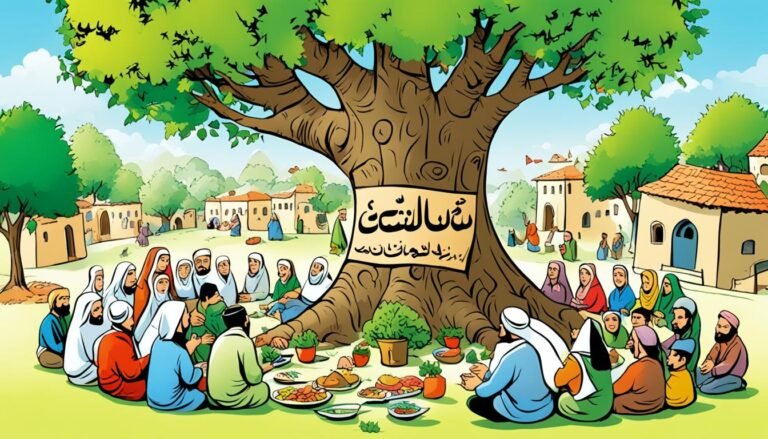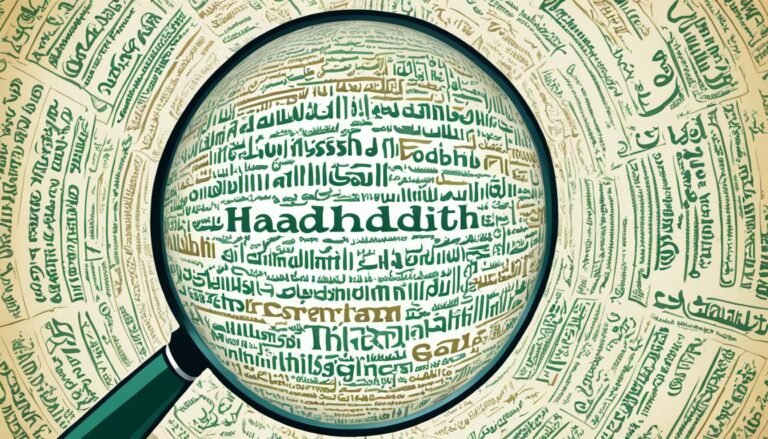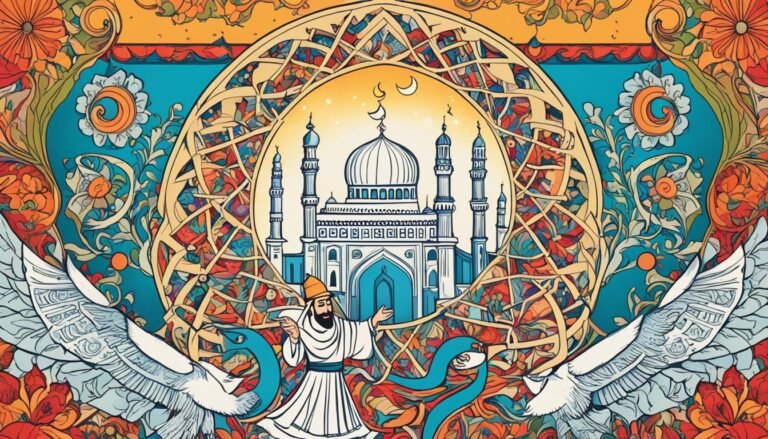The Evolution of Islamic Law in the 21st Century
How does Islamic law, with its long history, fit into today’s connected world? It’s a question many ask. The 21st century shows us how Islamic law changes with society while staying true to its roots. This law is not just a set of strict rules. It’s a flexible system used by about 400 million people worldwide.
What are the challenges and chances in Sharia Law today? This look will explore these questions. It will show how changes in Islamic law affect people and legal systems.
Key Takeaways
- Islamic law dates back more than thirteen centuries, making it the oldest legal system still in use.
- It serves as a fundamental aspect of legal studies in regions like the Middle East, Southeast Asia, and Africa.
- Islamic jurisprudence influences the lives of roughly one-sixth of the world’s population.
- The adaptability of Islamic law was recognized at the International Conference on Comparative Law in 1937.
- Islamic law’s divine origins set it apart from Western legal frameworks.
- The primary concept within Islamic law, Sharīaʿ, encompasses a holistic approach to a pious life.
- Different schools of thought within Islam offer distinct interpretations of the law’s hierarchy and principles.
Understanding Sharia: The Basis of Islamic Law
Sharia means “the correct path” in Arabic. It’s a key guide for living morally and ethically in Islam. It comes from the Quran and the Prophet Muhammad’s sayings and actions. These sources help shape the rules that millions of Muslims follow worldwide.
Sharia is interpreted differently in various places and legal systems. About fifty Muslim-majority countries use Sharia in their laws. Scholars have many views on Sharia, showing the diversity in Islamic law.
This means how Sharia is applied can change. Some believe in strict rules, like stoning for adultery or cutting off hands for theft. In some countries, like Indonesia, Iran, and Qatar, people are flogged. In Saudi Arabia and Sudan, some are even amputated.
There are also debates about religious freedom and tolerance. Some Muslim countries punish people for blasphemy with death.
Women’s rights are another area where Sharia is discussed. In some places, like Iran and Saudi Arabia, women must wear veils and need male guardians. Sharia also doesn’t support LGBTQ+ rights, with some places even punishing them with death.
Sharia is more than just laws; it’s a guide for personal, community, and spiritual life. Only about 10% of the Quran talks about laws. Yet, Sharia’s application reflects a deeper ethical and moral framework.
Over time, Islamic law has changed, influenced by culture and society. It has moved from oral traditions to a detailed legal system. Scholars and practitioners use this system today.
This evolution shows Sharia’s ability to adapt to modern society’s needs. To understand Sharia, we must look at its history, the many ways it’s interpreted, and how it varies across regions.
The Historical Context of Islamic Jurisprudence
The history of Islamic Jurisprudence, or fiqh, goes back to Prophet Muhammad’s time. This period set the stage for Islamic law, with rules based on the Quran. After the prophet died in 632 C.E., the Caliphs took over, lasting until about 660 C.E.
This era was key for legal growth, especially with the rise of Ijma’ (consensus) and Ijtihad (independent reasoning).
Later on, Islamic Jurisprudence grew more complex. By the mid-fourth/tenth century, a full judiciary and legal doctrine were established. Scholars created different Islamic law schools, or madhāhib, which shaped legal thought.
These schools were shaped by historical events and cultural exchanges. This diversity showed in the many ways Islamic principles were interpreted.
A key part of this history is tarjīḥ, a method for evaluating legal opinions. It started in certain madhāhib but grew to help solve conflicts and apply laws to today’s world. Today, tarjīḥ still helps balance old traditions with new societal needs.
Even with a lot of development, we don’t have many original sources from the early days of Islamic law. This makes it hard for historians to fully understand Islamic Jurisprudence’s history. Recently, scholars have rethought this period, saying it lasted longer than thought. This challenges our old views on where Islamic law came from.
Modern Interpretations of Sharia
Today, Sharia interpretations are diverse, shaped by local and cultural factors. Scholars say these interpretations vary widely across different societies. For example, Syria and Tunisia have made changes to Sharia in their laws.
In Syria, a law from 1953 requires a man to show he can support multiple wives. This shows Sharia being adapted to fit today’s needs. It also protects women who are divorced unfairly, showing a more modern view of Islamic law.
Tunisia took a different path in 1957, banning polygamy. This decision follows the Qurʾān’s advice on treating all wives equally. It shows how Sharia can evolve to support fairness and equality.
Pakistan’s 1961 law on Muslim families makes getting a second wife harder. It needs approval from a special council. This shows Sharia being carefully updated for today’s world. A later ruling let women divorce by paying their husbands, changing old rules within Sharia.
These examples show how Islamic law is always changing. They bring up debates on women’s rights and Sharia’s strict rules. As the world changes, Islamic law must too, balancing global trends with local values. This keeps the discussion on Sharia’s future lively and diverse.
| Country | Sharia Reform | Key Features |
|---|---|---|
| Syria | Law of Personal Status (1953) | Requires financial proof for polygamy; compensation for repudiated wives |
| Tunisia | Law of Personal Status (1957) | Outright prohibition of polygamy; aligns with Qur’ānic principles |
| Pakistan | Muslim Family Laws Ordinance (1961) | Second marriage requires Arbitration Council consent; divorce can involve compensation |
These updates in Sharia show a big change in how Islamic law is seen today. They encourage looking at old texts in new ways. This keeps Islamic law flexible and ready for new challenges and debates.
The Evolution of Islamic Law in the 21st Century
The 21st century has seen big changes in Islamic law. These changes come from cultural, social, and tech influences. People now want Islamic Law Reform to fit modern values while keeping traditional roots.
Factors Driving Change in Islamic Law
Many things are pushing Islamic law to evolve. There’s a big push for gender equality, justice, and human rights. Scholars, activists, and regular folks are all talking about how Sharia should change to fit today’s world.
Influence of Globalization and Technology
Globalization has made different legal views and Islamic law interpretations more accessible. It brings people together, making them question old beliefs. Technology, like social media, helps activists spread the word about important issues. This brings attention to legal reforms and lets underheard voices be heard worldwide.
| Factor | Description |
|---|---|
| Societal Demand | Calls for change driven by women’s rights movements and social justice advocates. |
| Globalization | Increased cross-cultural interactions facilitating diverse interpretations of Islamic law. |
| Technology | Utilization of social media to amplify reform efforts and highlight issues of justice. |
| Legal Scholars’ Initiatives | Movements to revive ijtihad providing space for contemporary reasoning and adaptation. |
Contemporary Islamic Legal Systems
Today, Islamic legal systems show a rich mix of different national and cultural views. In many Muslim-majority countries, Sharia law is applied in various ways, creating a wide legal diversity. For example, Saudi Arabia uses Islamic law fully in many areas. But, other countries mix Islamic ideas with their current laws, which were mainly Western before.
Before, Shari’a law was mainly used in special courts. These courts followed strict rules. But, other courts were used for criminal and business matters because they were more flexible. Shari’a courts needed two trustworthy witnesses to make a decision, which was hard in complex cases. This led to using other laws, especially for family matters.
Recently, there’s been more interest in Islamic law, changing how laws work. Islamic law is now more important in business deals, but its use is still unclear. Many contracts try to follow Islamic law but might include things like riba or gharar, which are banned. Contracts like mudaraba for sharing profits are key in Islamic business.
Understanding today’s Islamic legal system means looking at its history, the role of armed conflict, and how scholars view it. As Islamic law changes, courts face tough decisions. They try to keep up with new views in a changing world.
| Country | Type of Legal System | Sharia Application |
|---|---|---|
| Saudi Arabia | Islamic Law | Full application of Sharia in all aspects of law. |
| Pakistan | Mixed Legal System | Partial application of Sharia, integrated with British law. |
| Turkey | Civil Law | No formal application of Sharia, but cultural influence persists. |
| Malaysia | Dual Legal System | Sharia applies in personal status laws, while other areas follow secular law. |
| Egypt | Mixed Legal System | Sharia applied in family law, with secular codes governing others. |
Islamic Law Reform and Social Change
Islamic Law Reform is key in tackling today’s social issues, especially pushing for gender equality. Many groups work to rethink Sharia criminal laws. They aim to make them fit with today’s human rights. Scholars and groups lead these efforts, wanting a fairer view of Islamic law for our modern world.
Initiatives for Gender Equality in Islamic Law
There are many efforts to make Islamic law fairer for women. Scholars and experts push for changes that protect women’s rights and improve family laws. Scholars like Intisar A. Rabb and Kristen A. Stilt are key in showing why gender equality is vital in Islamic Law Reform. Studies reveal most scholars believe reason is key in understanding Islamic law, supporting women’s rights while respecting local cultures.
Controversies Surrounding Criminal Laws in Sharia
The debate on Sharia criminal laws often focuses on harsh punishments and how women are treated. The idea of doubt (shubha) affects how these laws are seen. In recent years, countries like Iran, Brunei, and the Maldives have made new criminal codes based on Islamic law. Scholars like Sherman Jackson stress the importance of looking at old traditions for real change. As we keep talking, social change and global views make reform harder, showing how Islamic law is always evolving.
| Country | Year of Code Drafting | Focus Areas |
|---|---|---|
| Iran | 1983 | Islamic criminal law |
| Brunei | 2014 | Sharia law implementation |
| Maldives | 2015 | Revised legal framework |
Impact of Islamic Law on Women’s Rights
The relationship between Islamic law and women’s rights is complex. The Quran teaches gender equality, but culture often goes against this. This leads to a gap between what is taught and what happens in real life.
Islamic law has given women important rights. For example, women could start a divorce, a right not common in many places until recently. The Matrimonial Causes Act of 1857 in England let women divorce, showing a big difference with Sharia.
Under Sharia, women get a “mahr,” a gift from their husband. This shows respect and independence. Daughters also inherit from their parents under Sharia, a big change from before Islam. They get half of what sons do, but this helps women be financially secure. This shows Sharia aims to support women’s rights and well-being.
But, how Sharia is applied varies a lot. In some places, women face many limits on their freedom. In Saudi Arabia, women couldn’t drive or vote for a long time. In Afghanistan, many women are forced to wear burkhas. These examples show how Sharia can be used to discriminate against women.
Groups fight for women’s rights within Sharia, pushing for changes in marriage, divorce, and education. They want to challenge rules that limit women’s freedom and justice. It’s important to look at Sharia again to empower women, not limit them.
Examples of Sharia Law Developments Worldwide
Sharia Law Developments show a wide range of legal systems shaped by culture, history, and society. In Indonesia, a mix of local customs and Islamic principles leads to unique governance. This blend respects tradition while embracing modernity. On the other hand, Saudi Arabia follows a strict, traditional interpretation of Sharia.
Across the globe, Sharia law is interpreted in many ways. The Ḥanafī school is common in the Middle East and India. In Africa, the Mālikī school is widespread. East Africa, Malaysia, and Indonesia mainly follow the Shāfiʿī school. Saudi Arabia stands out with the Ḥanbalī school.
In Iran and among Shiʿi communities in India and East Africa, a different version of Sharia law exists. This version is based on Shiʿi law and its own set of principles. Ibāḍī law is practiced in Zanzibar, Oman, and parts of Algeria, showing another variation.
From 700 to 900 CE, Sharia law’s historical interpretations were influential. Yet, today, it has evolved to ensure justice and equality, especially in family law. While some countries claim their laws follow Sharia, most laws are actually secular.
Sharia law has changed over time. Early Muslims looked to the Qur’an and the Prophet Muhammad for guidance. This led to different schools of thought due to varied interpretations. Now, Islamic countries use Islamic Family Law for family issues but secular laws for other legal matters.
| Country/Region | Dominant Sharia School | Focus of Legal System |
|---|---|---|
| Indonesia | Shāfiʿī | Progressive legal adaptations |
| Saudi Arabia | Ḥanbalī | Strict application of Sharia |
| Iran | Shiʿi | Mixed secular and Islamic laws |
| India (Shiʿi communities) | Shiʿi | Distinct interpretations of Sharia |
| Oman | Ibāḍī | Regional variations of Sharia |
Conclusion
The evolution of Islamic law in the 21st century shows a big change and flexibility. We’ve seen how globalization, technology, and debates have changed Sharia. These changes show that Islamic law is not set in stone but changes with society.
The method of tarjīḥ is now key in modern Islamic law. It shows how Islamic law can adapt for more than just solving conflicts. This shows the need for new interpretations to make laws fairer for everyone. Scholars and leaders are working to blend old values with new social needs.
Looking to the future, it’s important for everyone to keep talking about how Islamic law is changing. By tackling these complex issues, we can make laws that honor both tradition and modern life. The future of Islamic law will depend on how we handle these changes and reforms.
Source Links
- Meaning and Structure of Law in Islam
- Microsoft Word – Islamic law paper
- Understanding Sharia: The Intersection of Islam and the Law
- Sharia | Definition, Law, & Countries
- The Origins and Evolution of Islamic Law
- Foundations and Principles: An Introduction to Islamic Jurisprudence & A Brief Comparison to American Jurisprudence
- Continuity and Change of Traditional Islamic Law in Modern Times: tarjīḥ as a Method of Adaptation and Development of Legal Doctrines
- Sharia – Reform, Modernization, Equality
- Sharia Law in the Twenty-First Century (433 Pages)
- Evolution of Islamic Law | M.A.R. Habib
- Historical development
- The Origins and Evolution of Islamic Law
- Law and Religion in Contemporary Islam
- The Status of Islamic Law in the Modern Commercial World
- IHL and Islam: An overview – Humanitarian Law & Policy Blog
- The Law Library Marks Human Rights Day with a Discussion on Islamic Law Reform | In Custodia Legis
- Understanding and Framing Change in Islamic Law: Potentials and Possible Pitfalls of the Concepts of Canonization and Codification
- The Rise of Islamic Society: Social Change, State Power, and Historical Imagination | Comparative Studies in Society and History | Cambridge Core
- The Gender Dichotomy: How Sharia Law in the Seventh Century Granted Women Legal Empowerment – Princeton Legal Journal
- The Rights of Women in Islam and Some Misconceptions An Analysis from Bangladesh Perspective
- Lifting the Veil: Women and Islamic Law
- Sharia – Schools, Law, Development
- Sharia Law — Muslims for Progressive Values
- Conclusion

